Little is good – perhaps this would be the best way to describe the wines of Austria when observed from an international perspective. This is the home of rare specialties, not the crowd wines.
[CustomTables]
One can say without exaggeration that the Austrian wine is probably the most interesting phenomenon happening in the world right now. These wines can be found on every great wine list, being a real delicacy among the experts and professional writers. It is not uncommon that they are simply referred to as Austrian wine miracles.
But what makes the Austrian wine so special? There are many reasons, and these factors contributed together to achieve the wonderful quality blast which may be observed in the last few decades. One of the main reasons is the tradition of winemaking, the local grape varieties are used in the wine-growing regions for hundreds of years.
The grapes are in close interaction with the landscape, culture and everyday life. This refers to the typically Austrian grape varieties, which are widely deployed in the wine-growing regions. The duo of ideal geological and climatic interplay create the conditions for creating wines of unique character and individuality. This success story behind the concept is important. The winegrowers and winemakers quickly understood that the combination of tradition and modern methods has a key importance. Their motto: quality without compromise … and the result was successful, without exception.
The diversity of Austrian wines also holds a great importance: everything can be found from light, lively and rich, full-bodied whites to lovely or full-bodied reds with long aging potential. Last but not least, excellent sweet white wines are top-notch. And what the critics appreciate the most worldwide is the fact that Austrian wines can be matched perfectly to the dishes, their combined consumption becomes a real experience.
The origin of the wine is perhaps the most fundamental factor in terms of quality. The term “terroir” in recent years has almost become a slogan, but there are divergent opinions about its meaning. What is terroir? Does it mean the soil on which the vines grow? Or rather the climate is the key factor? But what about then the viticulture and winemaking techniques? It would be difficult to give the correct answer. Austria has a cool climate. This climate has a very significant role, which when combined with the soil conditions and other factors, greatly contribute to the character of local terroir.
Despite the fact that the Austrian wines are very diverse, there is a constant feature that distinguishes them from the international arena, namely the characteristic freshness, combined with a complete physiological maturity. There is no other place where the density and agility would be supplemented with such new and complex flavors in the wines.
Of course, there are many regional differences, partly because of the diversity of the soil, on the other hand because of the unique micro-climatic conditions. Based on these Austria can be divided in four main climatic zones: Danube region, Weinviertel, Pannonian region and Styria.
The wine-growing area of Austria is currently 50,000 hectares. The wine regions are typically found in the eastern part of the country. The greatest vineyards – 60 percent – are found in Lower Austria, followed by Burgenland with it’s 34 percent and Steiermark (Styria) with 6 percent.
Although the Austrian wines add up to only 1 percent of the world’s wine production, they are classified among the best wines of Europe. Three thousand years ago the Celts also recognized the possibilies in the fertile soils and the favorable climate of the region.
However, the country only subsisted the first upsurgence in the Middle Ages, when the bearing surface was steadily increasing and was ten times as large as today.
Let’s investigate the top 6 wines from Austria:
6. Alzinger
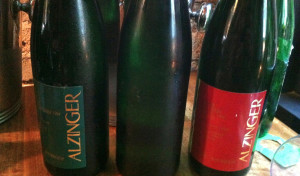
Until 1983, Leo Alzinger produced grapes for a local cooperative. His decision to bottle its own wines was richly rewarded by critics. On his 8.3 ha of terraces around Dürnstein, Leo Alzinger focuses on Riesling and Grüner Veltliner with a surprising depth and minerality.
Steinertal Riesling shines with a slightly smoky nose and white apricot aromas. Loibenberg Riesling is much more flexible. Among the Grüner Veltliner, the Mühlpoint reveals great depth, yet rigid structure and aromas of pear and lemon with great persistence on the palate. The Loibenberg Grüner Veltliner is fuller, with a nice play of acidity in the mouth, a high density and smoked fine aromas.
5. Hirtzberger
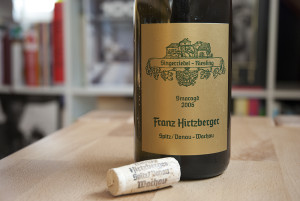
Franz Hirtzberger is always looking for the limits of the possible. In the terraced vineyards of his nice baroque domain in the village of Spitz towards the western end of the Wachau, oriented south-east, he makes raw wines that combine fruit maturity with impressive depth and complexity.
His grüner veltliners (harvested very ripe) are particularly recognized and their alcohol often reach 14 ° or more. However, this structure marked by power is never dominated by alcohol or by overripe aromas.
The Rotes Tor Grüner Veltliner, a vintage of great concentration and long finish, seems almost airy-fairy beside the Honivogl Grüner Veltliner, a monument in the bottle, endowed with vast mineral depth and a large fruit density. Another reference is the raw Singerriedel riesling that comes with unexpected elegance seen its high alcohol and its very pronounced fruit extract.
https://www.youtube.com/watch?v=eqgzsdQJwXg&index=2&list=PL5A2F81AB63C78C8F
4. Knoll

Emmerich Knoll feels at ease only in the midst of his vineyards. His wines, vinified with minimal technological intervention and often wooden vats, are distinguished by an almost baroque character, with a full and rich structure but still very fulfilling.
The terroir of the village of Loiben (softer than elsewhere with it’s shale and gneiss formations, protected by forested h nearby) allows it to produce exceptional wines with an enormous potential. Loibenberg Riesling expresses it’s terroir very frankly with floral honey, a great harmony in mouth and a nice complexity. Still further, the Grüner Veltliner of the same vintage emphasizes the primacy of the earth in the mind of the winemaker.
With its deep notes of apricot and rose, Riesling Schütt appears very large, even if the top is reserved for Vinotheksfüllung Riesling, exceptional selection vinified only in the best vintages, a true miracle with the character of late harvest.
3. F. X. Pichler
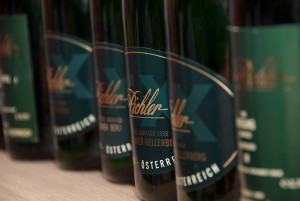
Franz Xaver Pichler is the visionary of the region. His goal: the ultimate expression of the character of Riesling and Grüner Veltliner. With its minerality and concentration supporting notes of citrus and pure fruit, the Grüner Veltliner Loibner Berg announced the personality of the estate wines.
The Kellerberg Grüner Veltliner is more dense, with a huge length in mouth, and M. Grüner Veltiner (Monument or for Meditation, your choice) is a great wine built for eternity. Among the Rieslings, the Kellerberg is a reference for depth, mineral character and persistence, and the particular selection Unendlich (“endless”) stands out with its velvetiness.
2. Prager-Bodenstein
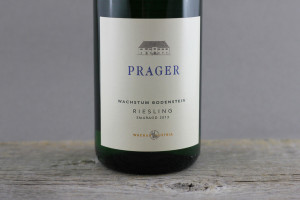
Reserve officer, training historian, hobby geologist and mayor of his village, Toni Bodenstein is a man with many faces.
Nobody knows better the terroir of the Wachau and his story is about the knowledge of investing in the research of depth and typicality. The result of the work of this true thinker is expressed in the great Rieslings and Grüner Veltliners with an impeccable character, true style standards of the region.
The Grüner Veltliner from the famous Achleiten vintage is very attractive with its honey and abricot aromas, great depth, unparalleled elegance and fine minerality. Klaus Riesling is finely fruity in his youth, with aromas of apricot and immaculate white flowers. Achleiten Riesling, a great vintage with flinty aromas, appears endowed with an astonishing transparency of fruits. The summit is reached by Wachstum Bodenstein Riesling, a miracle of delicacy.
https://www.youtube.com/watch?v=eA8C-M0_-HQ
1. Willi Bründlmayer
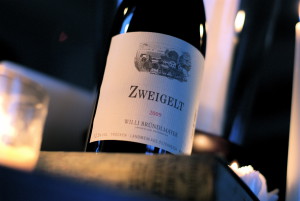
Master of a vineyard with 40 hectares, Willi Bründlmayer is among the major producers in the region in size and quality. Promising researcher, he had to take over the family estate when his father fell ill. Here, tradition meets a wine intellectual, with an open mind to innovation and labor which is respectful of nature.
World renowned for his great Rieslings and Grüner Veltliners, Bründlmayer also produces a wine of Champagne method (Pinot Noir and Chardonnay) and several red wines. The Käferberg Grüner Veltliner is still the most powerful and generous wine, while the Alte Reben (old vines) Grüner Veltliner offers more depth and concentration.
The Lamm Grüner Veltliner has a beautiful fruit maturity and a noble structure. Heiligenstein Alte Reben Riesling, fetish Cru of Kamptal is presented with a wonderful concentration. To end the parade of Rieslings, the Lyra Heiligenstein shows a beautiful mineral density. Other wines also include the beautiful vintage chardonnay and Vincent 2000 Cabernet Franc, Cabernet Sauvignon, Zweigelt).
“ White wine represents 65% of national production ”
In 2014, Austria has produced 225 million liters of wine, 6 % less compared to 2013, making the country the 17th biggest wine producer in the world according to the International Organisation of Vine and Wine (OIV) with a share of 0.83 % in world production. The production of wine in Austria, however, increased by 5.22 % over the last five years. With a self-sufficiency rate of about 113%, production is on average slightly higher than local consumption.
Austria was once a traditional producer of white wine. However, there is now a gradual increase in the production of red wines. The current production of white wine still represents 65% of national production, besides the 35% of red wine.
We hope you enjoyed this little compilation of Austrian wines. We actually have a great collection of this topic, so if you would like to know more about the best wines available in certain countries, we wrote about the best wines of Uruguay, Argentina, Germany, United States, Australia and Chile. Enjoy!
